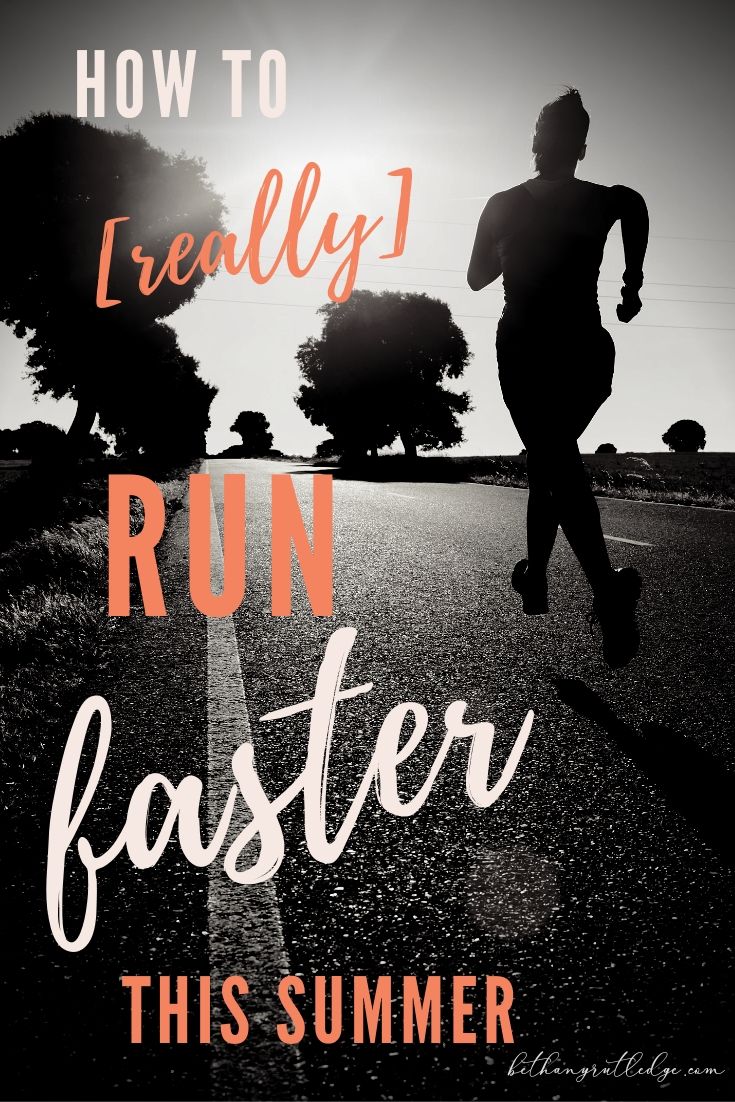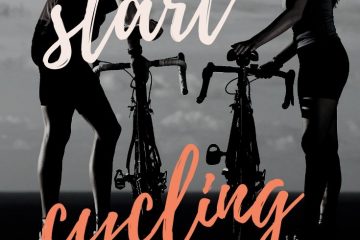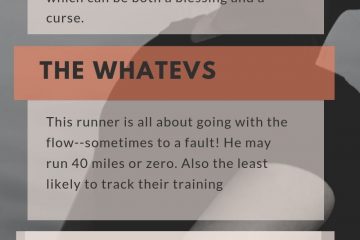How to [really] improve your running

How to improve your running
How to improve your running, and things that won’t get you there.
Let’s be honest, quick shortcuts to improve your running are totally appealing. When I first started running, I always wanted a shortcut. Here’s how things went down:
I’d sign up for races and ramp up training a few weeks before the event.
I’d add in (last minute) weight training in an attempt to strengthen my legs.
I’d totally change my diet (the week of the race) based on what the latest fitness magazine said.
Why didn’t I just run more?
The problem was chasing quick results instead of slow and steady improvement. The truth was, what I needed to do was well…boring.
Running Myth or Miracle?
Let’s look at some popular advice and see whether it is actually a tried and trued method, a red herring, or worse, something that may lead to injury.
As you’ll soon see, taking things to an extreme is generally the problem.
After that, we’ll discuss how to improve your running—for real—in seven tried-and-true steps.
Here we go!

Myth 1: The Perfect Shoe
What they say: The perfect shoe will have you running circles around everyone! It doesn’t matter if you only run three miles a week with horrible form.
Born to Run started this trend. First, everyone was wearing Vibrams. Then we moved on to an obsessing over heel drop and ounces saved. The terms “traditional running shoes” is a dirty word in some circles
Minimalist shoes could work for you if you’re a healthy, lighter runner with no lower leg issues. But be cautious. Going from higher heeled shoes to minimalist shoes or Newtons suddenly can wreak havoc on your soleus, gastrocs, or achilles. Also, If you’re unhappy with your shoes, consider a gait analysis first. Consider that it might not be the shoes. It could also be addressing issues with strength, flexibility., and a smart/gradual training program.
Myth 2: The Perfect Running Cadence
What they say: If you just fix your cadence, I’m sure you’ll PR.
At the 1984 Olympics, Coach Jack Daniels found that most runners averaged around 180 steps per minute. Clearly, cadence in this range is a key feature of runners who are fast and efficient.
That however, has led to the idea that you can magically boost your running by simply increasing your steps and keeping everything else the same.
The Truth– In general higher cadence is good. A slower cadence means longer strides which means more/higher airtime which means a great impact/chance for injury upon landing. One recent study by researcher Bryan C. Heiderscheit concluded that “subtle increases in step rate can substantially reduce the loading to the hip and knee joints during running and may prove beneficial in the prevention and treatment of common running-related injuries.
While you might want to consider modifications to your technique the idea that cadence is the most important key to success is false. Furthermore, drastic sudden changes in running form can overload different muscle groups that aren’t used to bearing the load.
Myth 3: Heel striking is evil
What they say: You just need to fix your heel strike, then you’ll be super fast an injury free.
Many newer models of running shoes emphasize a minimal to zero heel drop. The idea is to promote a more midfoot or ‘natural’ foostrike versus a heel strike.
Now there’s nothing wrong with these shoes per say and many runners prefer them. However, the problem occurs when you switch too quickly which can lead to a number of injuries including plantar fascitis or achilles issues.
The Truth- Studies have shown that elite longer distance triathletes and runners (longer than 10k) often naturally switch from a midfoot to heel striking as the distances grow longer. When these same athletes are running shorter or sprinting to the finish, they tend to naturally switch to a mifoot strike. In fact, former world marathon record holder Haile Gebrselassie purposefully switched to heel striking en route to becoming a sub 2:04 marathoner
Myth 4: Cross-Training [instead of enough running]
What they say: Quit doing ‘junk miles’ and ‘chronic cardio.’
Yes, I’m looking at you, Crossfit. Like the other fads, this idea started with a solid premise. Getting stronger overall can you help you learn skills than enable you to move better, which can subsequently translate to more efficient movements.
The Truth– Replacing swim, bike, and run with nonspecific activities- whether it be bowling, boot camp, or crossfit, cannot take the place of actual running.
So yeah, crosstraining is important, but you also have to run, aka specificity.

How to really improve your run
Sadly, there are no quick fixes. But there are some simple strategies that all triathlon runners can employ to improve from wherever they are. Warning, the below recommendations may sound hard and boring compared to the quick fix promises!
Of the training tenets you can manipulate—volume, intensity, duration, and frequency—one of the most underrated and underutilized variables is frequency. Many athletes fall into the trap of infrequent runs that are then too intense or long for their training to support.
A common example is the athlete who will do a very long run on the weekend and perhaps one other tempo to all-out run during the week and call it good. This stunts progress and often leads to injury. Don’t let this happen to you. Increase your run durability by practicing proper frequency.
Run frequency is achieved by first (gradually) stringing a number of short and easy runs together over many weeks, then slowly adding time, and then finally adding in intensity where appropriate. Do this for many months and then years, then you will get better.
Here are some tips for improving your run:
- Increase frequency—If you’re currently a student of the run twice a week group, then build up your frequency slowly.
- Intensity—After you’ve built up frequency, then add in some intensity. An easy way to add in intensity is to run once a week with others who are slightly faster. Less is more here. You’re likely also getting intensity from swim and bike workouts, so you need less quality (speedwork or hills) than you would as an open runner.
- Specificity- If your goal is to run fast off the bike, then you need to practice running fast off the bike- frequently, and with good form. Same advice goes for marathons, you need to practice running some number of miles at marathon pace at the end of a long run. The tricky part here is finding the right way to insert specificity without breaking yourself down too much, maintaining frequency, and not ‘racing’ in practice. This is where a good coach can help you design a program that takes your life and goals into consideration.
- Consistency– Boring warning! It takes years of consistency to improve. Establish a routine that you can repeat for a long period of time. Running 20 miles a week divided into 5 runs is better than running 20 miles a week divided into 2 (or 1) run. In the same vein, running 20 miles a week 50 weeks a year, is better than running 40 miles a week then taking a few months of break.
- Set midterm goals—Stay motivated and track your progress with periodic winter races.Targeting an off-season PB in 5K, 10K, or even half marathon will set you up to start the season off strong.
- Consider joining a group—Solo, near daily runs can get boring. Our athletes at Atlanta Tri Club are all ages and ability levels.
- Consider hiring a coach—A good coach can evaluate your strengths and weaknesses and recommend a personalized approach to attack your run. Our coaches at Energy Lab work with all levels.

Next up: Should I run by pace or heart rate?
Looking for courage to try something new? I’m here for that. Join 1470 others for a mostly-weekly dose of mojo.
More ideas on how to improve your run:
- Ultimate Guide: How to start cycling
- Find your runner personality [ to go faster]
- Top 4 worst new runner mistakes
- How does Garmin race predictor work?



17 Comments
Kimberly G · July 5, 2019 at 5:08 pm
I no longer run for PRs, but when I did, it was super helpful for me to stick to my training plan, which included speedwork at least once a week.
Kimberly Hatting · July 5, 2019 at 6:10 pm
That’s interesting about switching from mid-foot to heel strike later in a long-distance race. I tend to have more of a natural mid-foot strike, but I do notice things kind of changing on their own in really long races or when I’m feeling fatigued.
Darlene · July 5, 2019 at 6:36 pm
This is awesome. I am a stronger believer in running consistently. I try to get out there 4 times a week with one being a long run.
I do need someone faster to run with during the week. I also need to get to the gym once a week.
I now I can get faster but for the most part, I am getting course Prs or close to it in each race.
Michelle D. · July 5, 2019 at 10:39 pm
I so agree that there are no quick fixes! Working with a coach has really helped me improve my running without overtraining.
Jenn · July 5, 2019 at 11:51 pm
I absolutely believe in consistency. Even now, in the dead of summer, I’m just getting in those runs, regardless of how fast or slow I manage to go in the heat and humidity. Great tips and perspective.
Coco · July 6, 2019 at 11:11 am
You really do need to put in the work. Hill repeats, speed workouts— they do pay off if you push through them.
Angela · July 6, 2019 at 8:07 pm
These are all really great tips! I definitely need to work on my speed. I do a lot of endurance runs and have for years, but I am bad about adding in the speedwork.
Bethany · July 6, 2019 at 8:16 pm
I totally feel you! I find that I almost need some sort of external motivation like going to a track workout. Or currently, in my more-casual sitch, going to Orange Theory. 🙂
7 wordpress mistakes killing your mom blog traffic — Bethany Rutledge · March 27, 2019 at 5:58 pm
[…] Next up: 5 ways to really improve your running. […]
The #1 way to get (and stay) motivated for running in 2019— Bethany Rutledge · May 20, 2019 at 5:26 pm
[…] Next up: 5 ways to really improve your running. […]
Run training plan tips — Bethany Rutledge · May 31, 2019 at 4:04 pm
[…] Next up: 5 ways to really improve your running. […]
From Zero to 5k in 8 Weeks l 5k Training Plan — Bethany Rutledge · June 4, 2019 at 9:13 pm
[…] Next up: 5 ways to really improve your running. […]
Ultimate Guide: your sprint triathlon training plan — Bethany Rutledge · July 8, 2019 at 9:18 am
[…] Read: Improve your running with these five techniques […]
The best 5k pacing strategy for all levels — Bethany Rutledge · July 13, 2019 at 1:45 pm
[…] Read: How to really run faster this year. […]
The truth about cadence and cycling — Bethany Rutledge · July 22, 2019 at 6:37 pm
[…] Related: Is cadence the answer to better running? […]
Ultimate Guide: How to start cycling — Bethany Rutledge · July 22, 2019 at 8:14 pm
[…] Related: How to really get faster running this year […]
Top Four Mistakes Made by Newbie Runners · July 25, 2019 at 2:28 pm
[…] Read: How to really improve your running […]
Comments are closed.